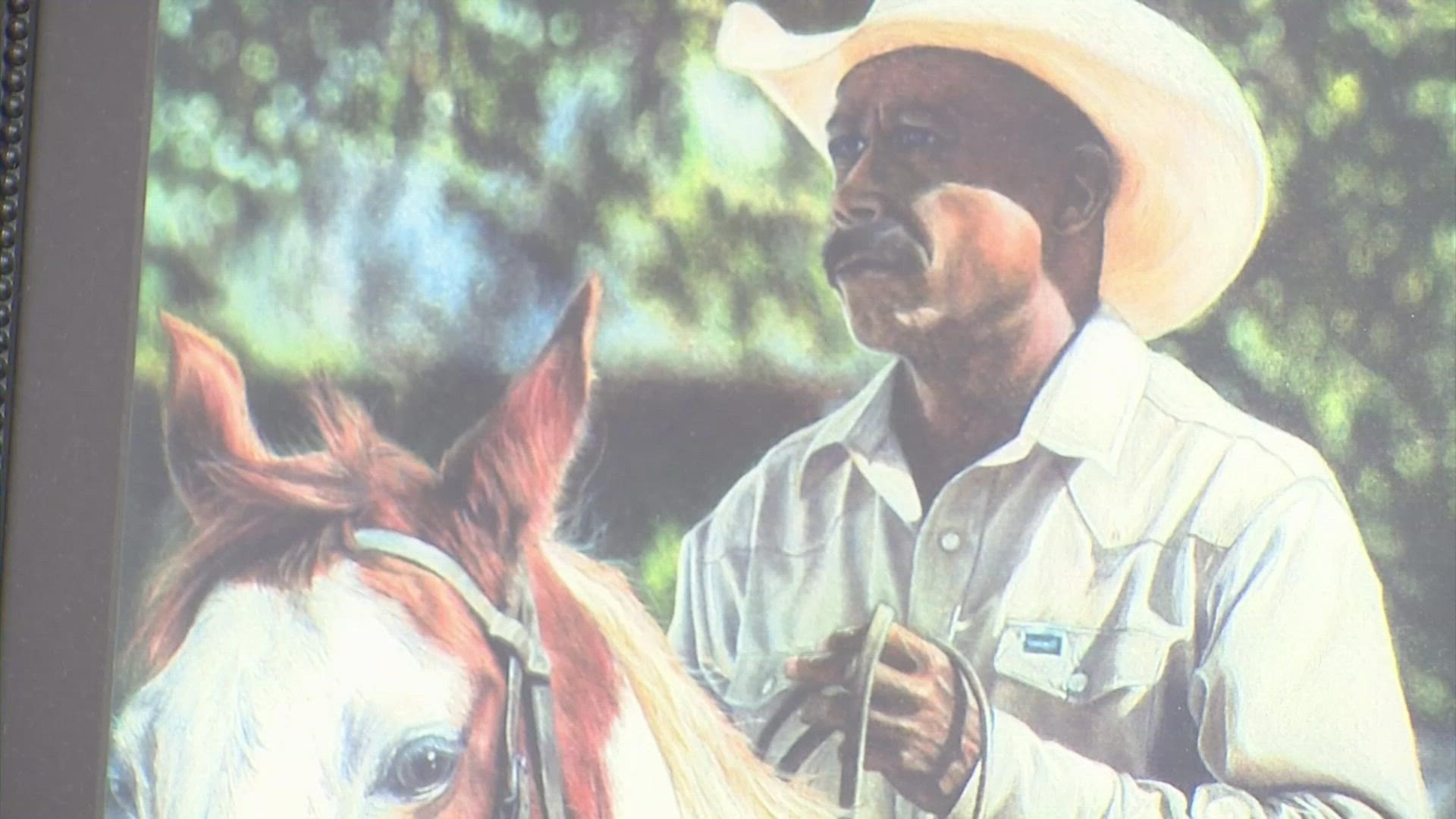TEXAS, USA — Larry Callies of Boling, Texas has made it his mission to educate the world on what it means to be a Black cowboy.
Callies is the owner, of the Black Cowboy Museum, a nonprofit located in downtown Rosenberg.
Callies started rodeo riding when he was 15-year-old. He says his cousin Tex was the first to pave the way for black riders.
“He was the first black to win an all-white rodeo in 1967. I was the second to make the state finals, but I didn't win," said Callies.
Callies says he worked at the Simonton Rodeo for years. He says hanging out at the rodeo is where he discovered another talent as a country music singer.
“George Straight’s manager was my manager until I lost my voice. Clint Black’s man was my man until I lost my voice,” said Callies.
He was later diagnosed with vocal cord dysphonia, which he says redirected his steps.
Callies says his motto has always been, "I'm a Christian first and a cowboy second."
He says he stepped out on faith opening the Black Cowboy Museum in 2017.
Among the articles, artifacts, and pictures hung on the walls of the museum is Callies’ longtime friend, David Solomon.
"I was the first black that ever rode in a high school rodeo during that time but there was no record-keeping of it,” said Solomon, pointing out his pictures.
He is a professional retired bull rider who fought the many struggles of being a Black rider in the 1960s.
“Although you rode a good bull you didn't win nothing because of being the color black,” he said.
As an African American equestrian rider, KHOU 11 reporter Brittany Ford asked Callies, “As a black rider myself, I feel like it's taboo for you to say that you ride horses or are an equestrian rider, a cowboy, why do you think that is?”
Callies responded, “That’s just the way it was. They didn’t put us on tv, they don’t know anything about us, the real history.”
He explained the word Cowboy, was originally a slave term, "Because a white man could be 20 years old, and a black man could be 55 and they’d say hey boy go get that cowboy.”
Callies says historically white men were cowhands and slaves were cowboys until Hollywood took on the term the in 1920s depicting white men as cowboys through western film and radio.
"I'm not no cowhand, I'm a cowboy like I see on TV. That’s where it changed,” he said.
Fast forward decades later Callies and Solomon are true trailblazers.
“We opened up the door, back there in the 60s. Black cowboys just weren't there for riding bulls but the opportunity now for a black cowboy to make it, there's no excuse,” said Solomon.
Rich black history you can find in Callie’s 1600 sq. ft. building in Rosenberg.
“Black Cowboys were the first cowboys,” he said.
The museum was recently awarded a $1 million grant to build a brand-new state-of-the-art museum. The new museum in Kendleton, Texas is set to open sometime in March of 2023.

